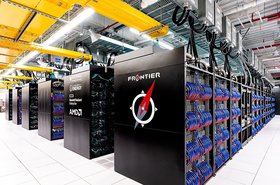The adoption of Industry 4.0 use cases in enterprise and industrial markets is changing the way the cloud is architected.
Edge clouds are increasingly being used for business and mission-critical applications that need ultra-low latencies and six-9s reliability or better.
These Edge-cloud use cases need connectivity with a sufficient performance at scale that is also operationally efficient.
This is creating a demand for new networking technologies, such as the latest silicon advances in IP and optical transport.
Operationally, it is putting the focus on harnessing automation to configure and manage networks with the necessary scale and efficiency.
Although solutions are usually evaluated for the performance of the actual technologies employed, another set of requirements is often overlooked: the experience, pedigree, and global presence that technology partners bring.
This varies dramatically across the vendor landscape. Implementing and managing these generational networks requires the right partnerships to fulfill both the stringent technological requirements and to satisfy post-deployment operational needs.
For Edge clouds and their use cases to be successfully implemented, it will require both novel technological innovations and the automation of highly complex and layered networks, neither of which can be achieved on a global basis without finding the right partnerships.
Edge cloud use case challenges
Building the next generation of highly distributed clouds that can meet the requirements of customers and partners poses multiple challenges.
These include new performance expectations, growing network complexity, and stringent technological requirements.
Industry 4.0 traffic is quite different from the kind of best-effort traffic that was generated by the first generation of cloud applications.
Today’s webscale operators need to deliver services with strict SLAs around latency and reliability, sometimes even exceeding telco standards. Some Edge cloud use cases call for reliability as high as six or seven 9s.
Telehealth and emergency services clearly require mission-critical reliability, but many industrial systems have equally strict performance needs.
Autonomous systems and remote-controlled operations are another example where performance standards are very high.
They require ultra-low latencies to ensure precision in addition to increased speed and productivity.
Many autonomous mobile robot (AMR) use cases for warehouses and factories still use expensive on-board processing to ensure low latency.
Using local high-speed wireless such as LTE or 5G to connect to an Edge cloud will make these autonomous use cases more affordable.
As well as needing less on-board processing, they can also profit from end-to-end optimization and coordination by a central automation system.
The other aspect of Industry 4.0 Edge use cases is the high degree of variability and intermittency in terms of performance needs. This demands tremendous scalability and responsiveness from the cloud and the underlying network.
Like compute and storage, network resources essentially need to be elastically consumable.
Processing requirements at the Edge and the core will shift constantly, depending on the performance needs of individual use cases.
The network must be able to match this variability, automatically provisioning the necessary resources to assure network and service availability.
A very high level of reliability and dynamism must be delivered at the same time across DC network fabrics, enterprise private wireless access and wide area network (WAN) IP routing, optical, and microwave transport networks.
Orchestration and assurance must be able to provision connectivity services end-to-end, on demand, which is only possible if the provisioning, monitoring, and adjustment of network service resources is automated and programmable.
The right partner with the right pedigree
Ensuring end-to-end service assurance is a lot to ask of most cloud builders like IXPs and colocation providers.
Providing Edge-cloud-based support to enterprise and industrial use cases involves a wide variety of network technologies including routing and transport technologies in the WAN and private wireless networks in the enterprise.
As we anticipate future Edge cloud applications and use cases, one of the most critical areas of innovation will be in networking, mostly because today’s technologies are pushing up against critical limits.
With the right partnerships, cloud operators have a golden opportunity to support enterprise and industrial customers in one of the most rapid productivity transformations ever seen.








